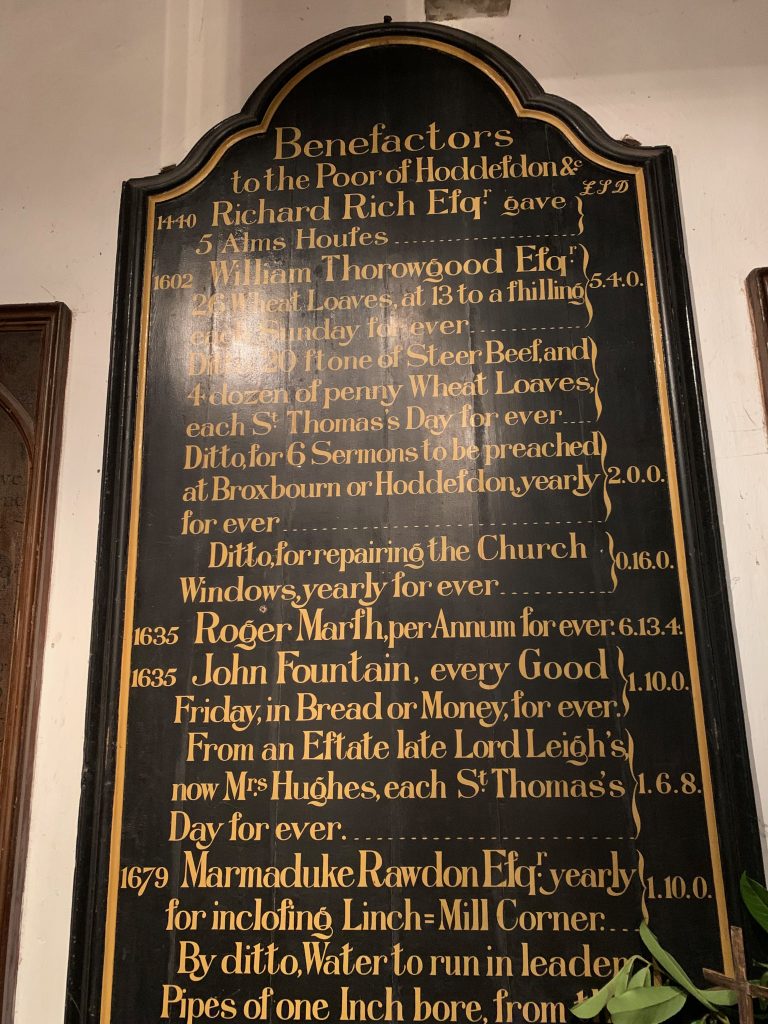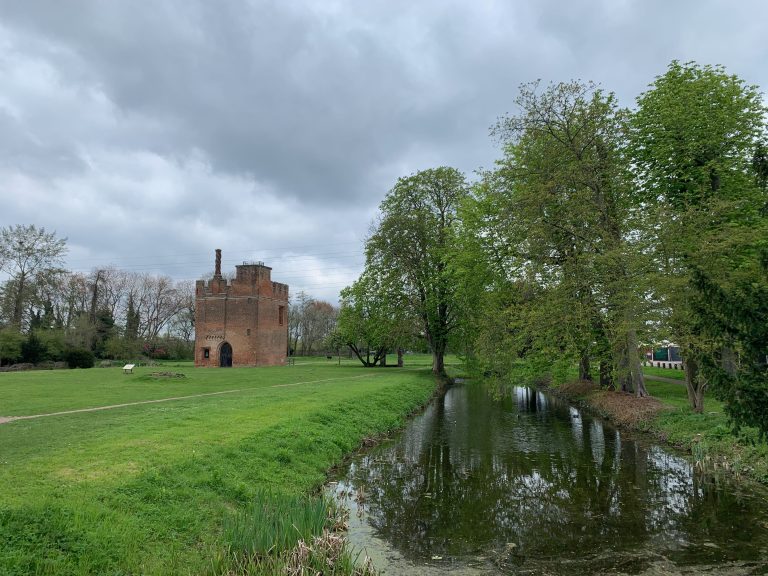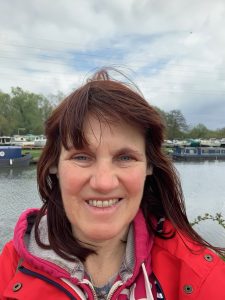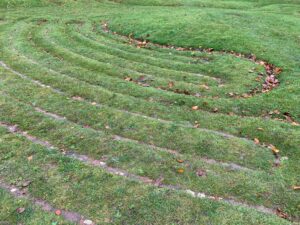Tuesday 18th April 2023
Guidebook: 10.5 miles
My Garmin: 11.3 miles
Day two of my walk to Walsingham takes me from Waltham Abbey to Stanstead Abbotts in Hertfordshire.
I need to watch the clock today. I’ve decided, almost on impulse, to walk the next stage of my pilgrimage on a weekday, while Martha is in school. I was going to walk on Saturday, but rain is forecast then, and I’m itching to return to my Camino after a busy Easter holiday[1]. So I drive to Waltham Cross railway station and park the car there. It’s 10.30am when I start walking, and I need to be back at my car by 3.00pm at the latest. There are several stations along my route, so my plan is to see how far I can get in the time available before catching a train back.
I begin by walking back towards Waltham Abbey, along a busy and uninspiring main road, so as to reconnect with the point I finished my previous walk. I would forgive anyone else for skipping this bit, but I have a completer-finisher personality, with a need for tidiness and sewing up of loose ends which sometimes exasperates the people I live with. Today there’s no one but myself to exasperate, and I want my Camino to be all joined up. So I march determinedly along to the bridge over the River Lea, and then turn round and walk straight back again, passing the station and heading into Waltham Cross town centre.
A Royal Love Story

Just past the bus station I enter the pedestrianised shopping street. It’s unglamorous: discount retailers and charity shops in tired, 1970s-style architecture. Crushed coffee cups and discarded cigarette ends drift across the paving. The whole place could do with a makeover. But between an bank, an opticians and a betting shop stands the glorious Eleanor Cross from which the town takes its name. The Cross is a tall, lovingly-restored medieval confection of carved figures, gargoyles and gothic tracery. It reminds me of the Albert Memorial in Kensington Gardens, and indeed this is another royal love story in stone.
When King Edward I’s wife, Eleanor of Castile, died in 1290, her grieving husband had twelve ‘Eleanor Crosses’ erected at the places her body rested on its final journey from Nottinghamshire to London. Most have been destroyed, but there’s another one remaining at Geddington in Northamptonshire, and the cross from which Charing Cross takes its name is the final Eleanor Cross. After Eleanor was buried in Westminster Abbey, Edward ordered that two candles were to burn perpetually before her tomb. They burned for two and half centuries and were extinguished only at the time of the Reformation. It’s a touching witness to marital love in an age we often associate with hard-nosed dynastic alliances. Edward I and Eleanor both went on pilgrimages to Walsingham, and once again I have the sense of following in the footsteps of real people whose hopes, joys and sorrows were not so different from ours[2].
Greenness and Water
I continue up the High Street, soon crossing a busy main road and following a row of houses towards the railway line and the Lee Valley Country Park. The footbridge over the railway is immensely high to surmount the overhead electric cables, and my heart is pounding by the time I reach the other side. Then it’s north through peaceful parkland, passing lakes, and following helpful signposts towards the dear old River Lee/Lea (it seems to have both names, used interchangeably).
It’s good to be among greenness and water again. The park is quiet on this cool and overcast weekday, and I pass only the occasional hiker or dog-walker, though there are plenty of ducks and geese to keep me company. The route is flat and well-paved, and soon I’m striding along at a good pace, aware of my time constraints. The path follows the canalised River Lea Navigation on narrow strips of land between river and lakes, heading upstream past a series of locks. There are plenty of moored boats, similar to those I saw in London, many heavily laden with the paraphernalia of life afloat. I say hello to a houseboat cat, spot a pair of nesting swans, and notice a boat called Deo Gratias – thanks be to God! – which reminds me to count my blessings.
The rhythm of walking helps me slip into reflection. It was great to get together with all the family on holiday last week, but I’m not so used to big groups of people these days, and I realise I’ve been craving some solitude. As I walk, I can feel the knots in my mind begin to loosen. No need actively to think and problem-solve right now; it’s enough just to follow the river. The Camino carries its own gentle power to soothe and untangle.


Broxbourne and the Old Mill
As I near Broxbourne, the boats start to look smarter, and there’s a definite shift upmarket in my surroundings. Across the water stand big, expensively-maintained houses with gardens running down to private moorings. I can almost smell money on the breeze. There’s a cheerful looking cafe close to Broxbourne Old Mill, and I’m tempted to stop for a cuppa, but time is pressing so I decide to keep walking instead, munching my sandwiches as I go.
There’s not much left of the Old Mill apart from the millpond and stream, with the remains of a sluice gate, some ironwork, and a few stone walls. A watermill stood here for nine hundred years, dating right back to the Doomsday book and the Knights Templar, but it was all destroyed in a fire in 1949. Nobody needed watermills by then, so it was never rebuilt. Who knows what the future may bring, with increased interest in renewable sources of energy?[3]
A Deliciously Old Church
I turn left, away from the River Lea for now, up a little incline towards the tower of Broxbourne parish church, dedicated to Saint Augustine. There’s a signboard outside the church: ‘Welcome – Church Open’, so I take up the invitation and step inside. The interior is one of the unexpected highlights of today’s walk – quiet, prayerful, and thick with history. As a Roman Catholic, used to worshipping in twentieth-century buildings, I often forget the delicious oldness of so many English churches. I’m greeted in the entrance porch by a charming Easter garden underneath a signboard commemorating a list of seventeenth century ‘Benefactors to the Poor of Hoddesdon’. Bequests to the community include wheat loaves, church window repairs, piped water, and the preaching of sermons. What the poor made of all this is not recorded! Further inside the church, carved oak pews, medieval tombs, spring flowers, banners, and an ancient royal coat of arms all contribute to an atmosphere of long-established peace. I sign the visitors’ book, and leave feeling refreshed[4].


New River
There’s a pretty waterway outside the church – not the River Lea this time, but the New River. This is a man-made aqueduct, constructed in the seventeenth century to bring drinking water from the springs and aquifers of Hertfordshire to London. It still supplies 220 megalitres daily, which is eight per cent of London’s water supply. The New River is shallower than the Lea, crossed by very low bridges, so clearly not designed to be navigable. Its scale and depth reminds me of the Cam in Cambridge. The water looks very clean, with long weeds drifting in the flow, and I’m happy to be following it for the next couple of miles[5].

A Sad Reminder
I reach Broxbourne station and check my watch and the train timetables, but I’ve still got plenty of time, so I keep walking, passing even bigger and grander waterside houses with manicured topiary and elaborate summerhouses. I pause beside a little memorial to Ben Mark Pegram, a young man who died by suicide in 2021. There are lanterns here, and teddy bears, as well as an Arsenal flag, and a plaque with a short poem about Ben and a reminder to call the Samaritans helpline if you are struggling with your mental health. It’s a sad reminder of the vulnerability of young men to suicide, especially, perhaps, during the Covid pandemic[6].

Hitting an Obstacle
I’m making good progress when I hit an obstacle: a fence barring my way due to Thames Water repair works along the New River edge. There’s a confusing notice about a detour, and I have to add maybe half a mile to my route as I navigate around a busy dual carriageway near the centre of Hoddesdon. It’s a relief to get back to the river again, and before long I make it to Rye House, which is both the next train station, and the site of a historic manor.
A Pair of Plotters

Rather like Broxbourne Old Mill, there isn’t a lot left of Rye House, although the gatehouse still stands, surrounded by a moat, green grass, and brickwork on the ground marking out the original floorplan of the manor. The house was constructed in 1443 and is one of the oldest brick buildings in England. Henry VIII’s sixth wife, Catherine Parr, grew up here, and it was the centre of a notorious plot to assassinate King Charles II in the seventeenth century. It was mostly demolished in the early twentieth century, but the gatehouse is quite impressive, with a single, barley-sugar-twist chimney and some very fancy brickwork. I walk around it. It’s all locked up, but I peer into the windows, and am momentarily shocked to see two long-haired figures with lacy cuffs flopped over a table. Are these the fiendish Rye House plotters of yesteryear? No – only waxworks, doubtless designed to add a bit of interest on the days the building is open to the public, but they certainly grabbed my attention![7]

A Satisfying Mini Adventure
Checking the train times again, I reckon I can make it to Stanstead Abbotts and nearby St Margaret’s station if I keep up a good pace. I re-join the River Lea, and quicken my stride, passing under trees and enjoying the signs of spring: the last daffodils, the crinkly green of new leaves, frothy cherry blossom, and even a swallow perched on an overhead wire. There’s a big marina at Stanstead Abbotts, with a crane for lifting boats in and out of the water. I pause to admire this for a moment before hurrying to catch the 14.17 train with just minutes to spare.
I’m back in Waltham Cross by just after half past two. It’s only been four hours since I parked my car here, but it feels like much longer. I’ve packed a mini adventure into the middle of a weekday – exploring new places, discovering nuggets of history, and making progress on my pilgrimage to Walsingham. I head home feeling satisfied, soothed, and pleasantly tired. Walking from Waltham Abbey to Stanstead Abbotts was a marvellous day out, and I’m already looking forward to the next stage.

Karen Lawrence is a mother, grandmother, yoga teacher and writer. She lives with husband Adrian and youngest daughter Martha in Billericay, Essex, United Kingdom. Karen has published two books and is currently working on a novel about outlaw midwives in a dystopian future Britain.
Letting the Light In: How A Baby With Down Syndrome Changed My Life is Karen’s personal account of having a baby with Down Syndrome. It is available from Amazon at
Karen’s first book, Finding Your Calm Space: Thirty-One Ways to find Calm in a Crazy World is available from Amazon at
If you would like to follow Karen and be kept up to date with her writing, please sign up at https://karenlawrenceauthor.com/join-the-mailing-list/
[1] You can read more about my London to Walsingham Camino in my previous posts:
[2] You can learn more about the Eleanor Crosses here:
https://alondoninheritance.com/cycling-around-britain/eleanor-crosses-st-albans-and-waltham-cross/
https://www.historic-uk.com/HistoryMagazine/DestinationsUK/The-Eleanor-Crosses/
[3] There’s more information about Broxbourne Old Mill here, and a great picture:
[4] You can learn more about lovely St Augustine’s church at this link:
https://www.staugustinesbroxbourne.org.uk/our-history
[5] There’s some interesting information here about the New River and its history:
https://www.londonslostrivers.com/the-new-river.html
[6] I found this touching news article online about the sad loss of Ben Pegram
[7] You can read more here about Rye House and its history:
https://thetudortravelguide.com/2018/09/08/rye-house-childhood-home-of-katherine-parr/




